TEXT AND PHOTOGRAPHS BY NIHARIKA JOSHI
Ahmedabad, Gujarat, India
In the small room between our Dadi’s bedroom and painting studio, there are two wooden almirahs with glass and wood shutters. Many years ago Dadi had white cloth hung on the inside of the glass, hiding contents of the cupboard away, except for an unusual glimpse once in a while. The wooden shelves, neatly lined with photo frames, books, art materials, files and boxes collected over the years have often stirred my curiosity on visits to Dadi’s studio. One evening, I walked in to find the cupboards open, and a sea of sundry items down for some cleaning. Of these a small ,peculiar brass object on the back shelf, now revealed by the emptied cupboard drew my attention.
Holding the brass instrument at its wooden base delicately, like a piece of jewellery, Dadi said “Yeh kya hai, pata hai kya? Kabhi dekhi hai (aisi machine)? Meri Dadiji ki hai”. This object, unfamiliar and unknown to me, seemed to be less machine and more a delicate piece of craftsmanship, from a time long gone. Two upright brass legs, curved like a ballerina in plié hold up a pair of brass rollers between them on top , joined to a protruding lever. Holding the lever between her forefinger and thumb, Dadi turned the gears clockwise. Slowly at first, and then as if turning away at years of disuse, faster with each rotation. The two spiked brass rollers turn together with ease and precision, gently shaking the brass legs sometimes.
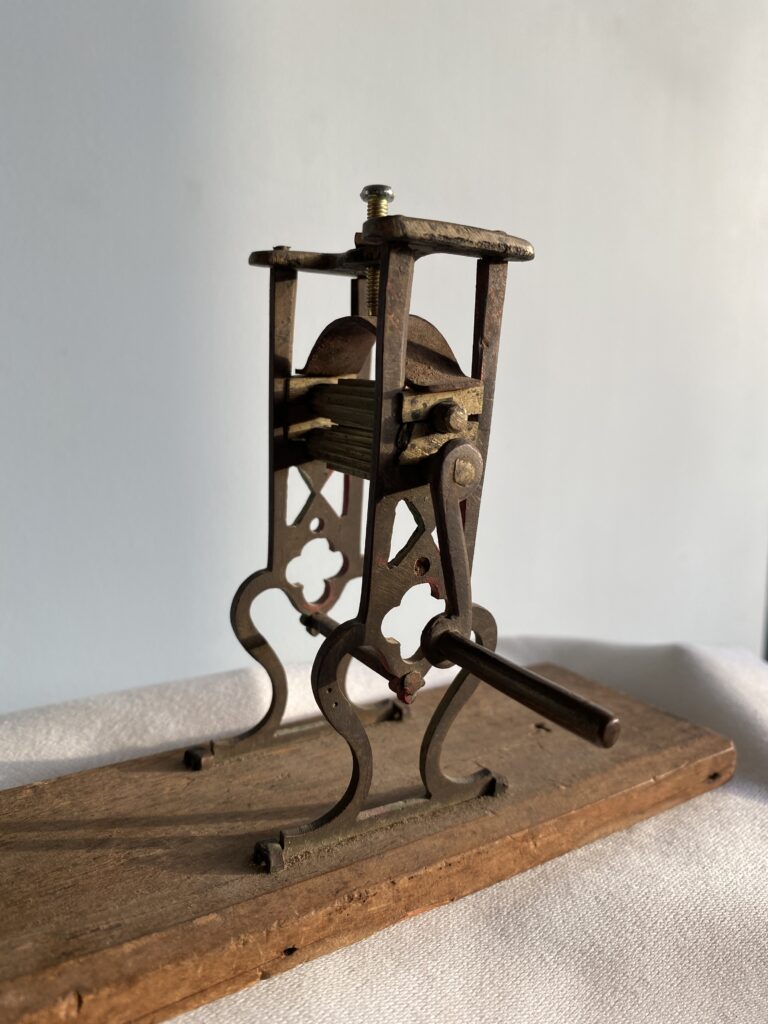
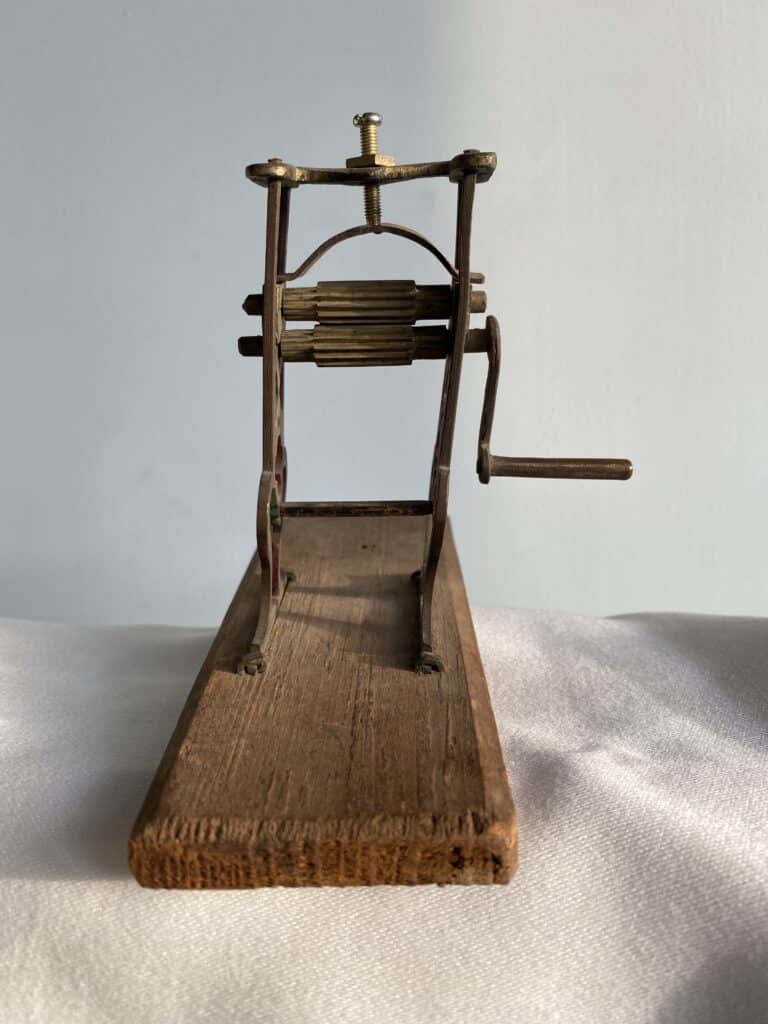
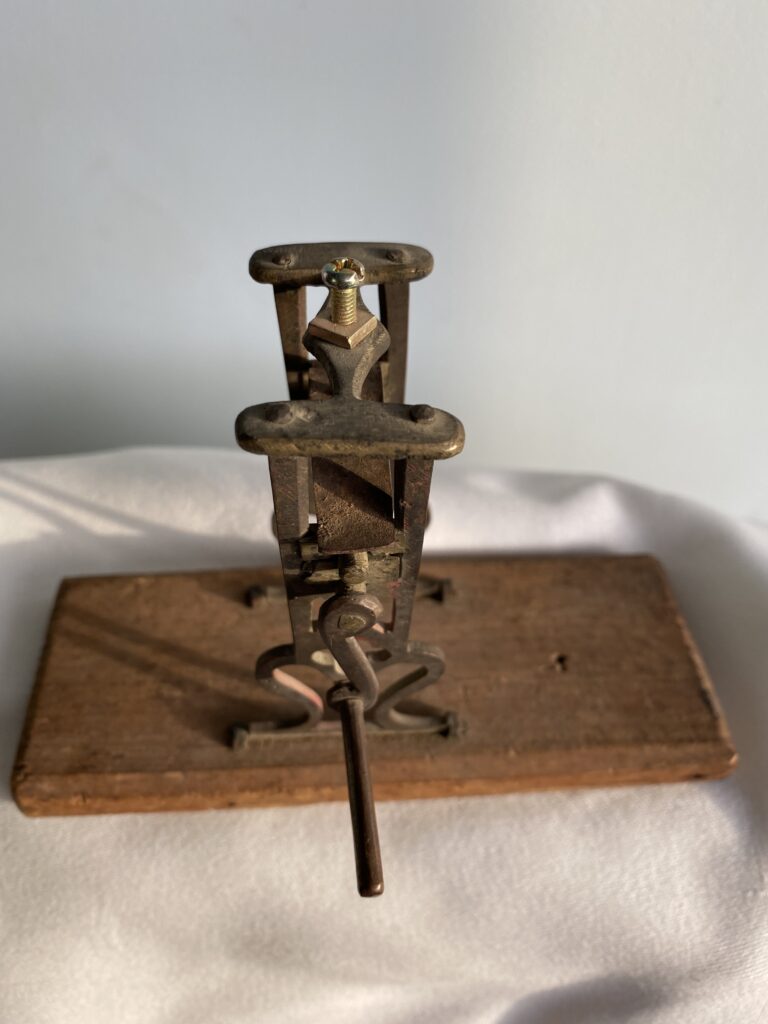
I began thinking of complicated uses for this simple contraption, as a tiny vegetable squeezer, or paper shredder or even a miniature sugarcane juicer! But the answer came from Dadi, “Yeh hai gota patti ki machine!” she said. Gota Patti, or embroidered lace borders have been a popular fabric embellishment used in Rajasthan, Dadi’s home state. Now increasingly elaborate, detailed and heavily crafted with gold and silver thread, this machine is from a time of simple crimping of the gota lace into easy and even frills. In perfect working condition, slightly blackened with disuse and only the top brass screw replaced by a steel one, the lace-crimper, a little bent but not broken, has witnessed a century of change. The same evening we passed strips of paper and cloth through the rollers, to create our own frilled ribbons of lace! I also exhibited the machine on social media and called for answers on what this machine could possibly be. Apart from a few very interesting guesses, much to Dadi’s delight, I received stories of two similar lace-crimpers, kept safely by two families originating from Rajasthan!
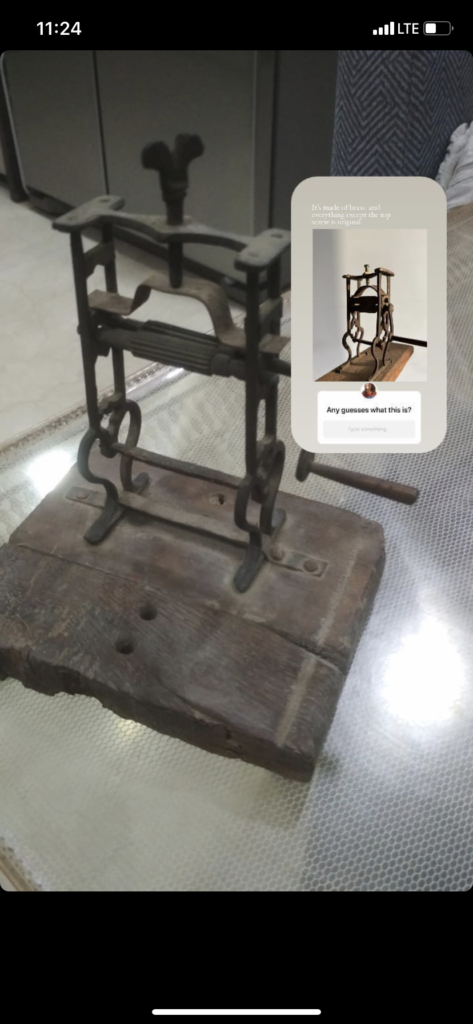

This lace-crimper belonged to Dadi’s grandmother, RamPyari Devi who lived in the Taparia family home in Rajasthan. The origins of the lace-crimper are unknown, and the machine holds no markings of its maker. Dadi estimates that like most other Marwari households of the region, this machine would have been acquired for the family at the nearest large town, made by local blacksmiths in the early 1900’s or earlier. Perhaps the oldest surviving tool in Dadi’s collection, it was extensively used to crease lengths of gota as a shared possession of the large joint family Dadi grew up in.
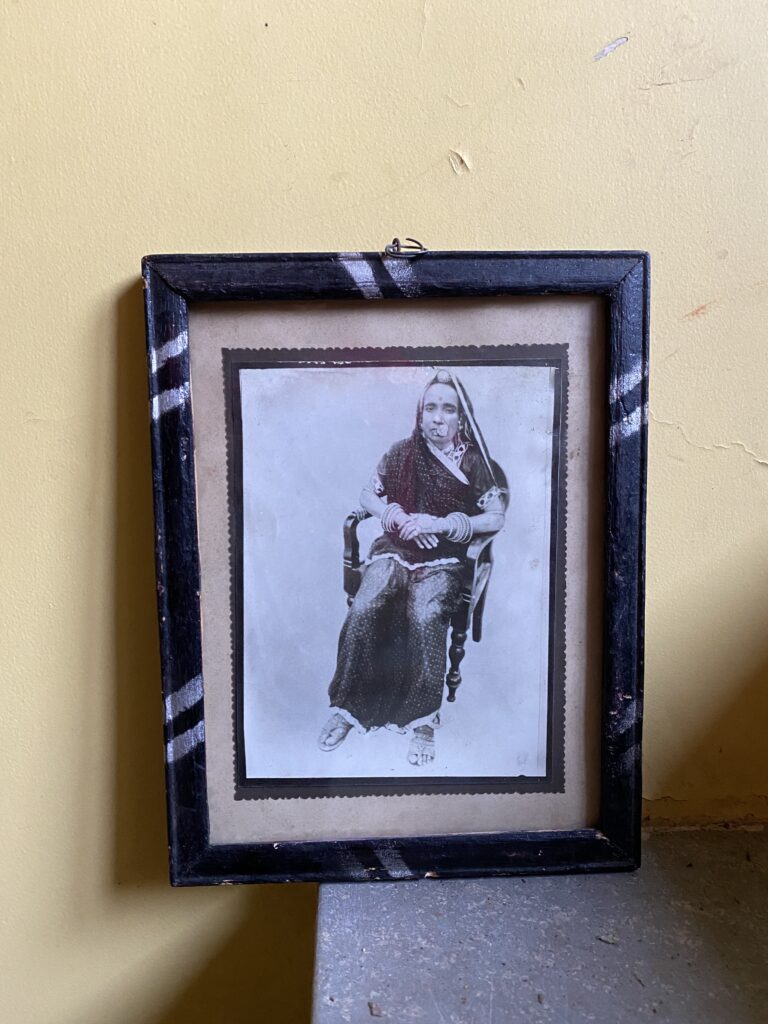
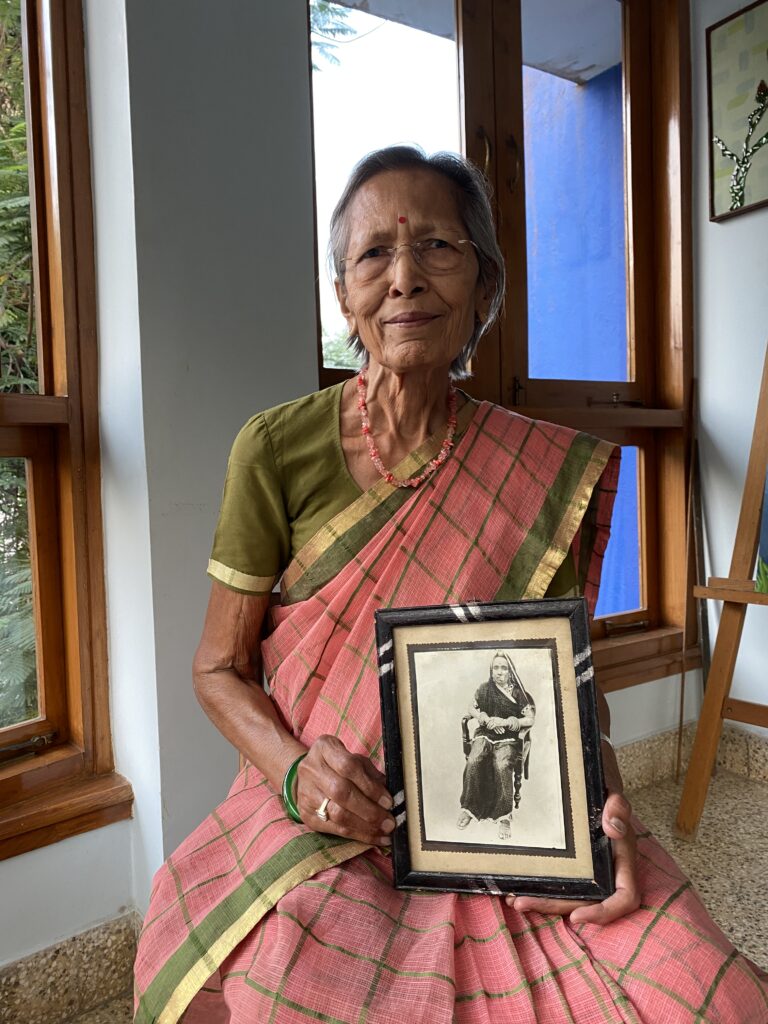
Following her wedding in 1954, a young Dadi moved to Jodhpur, from her maiden home in the small town of Jaswantgarh. Upon returning to Jaswantgarh a few years later, she got a chance to revisit the haveli’s large storerooms and rummage through furniture and paraphernalia during its annual cleaning. Apart from old jewellery boxes, some utensils and picture frames, Dadi came across this lace-crimper, a small reminder of her paternal grandmother, and days spent in the courtyard. The 5 inches tall machine then accompanied her to Jodhpur, where it rested briefly, and eventually found its way to their family home at Ahmedabad, tucked away at the back of Dadi’s cupboard of wonders.
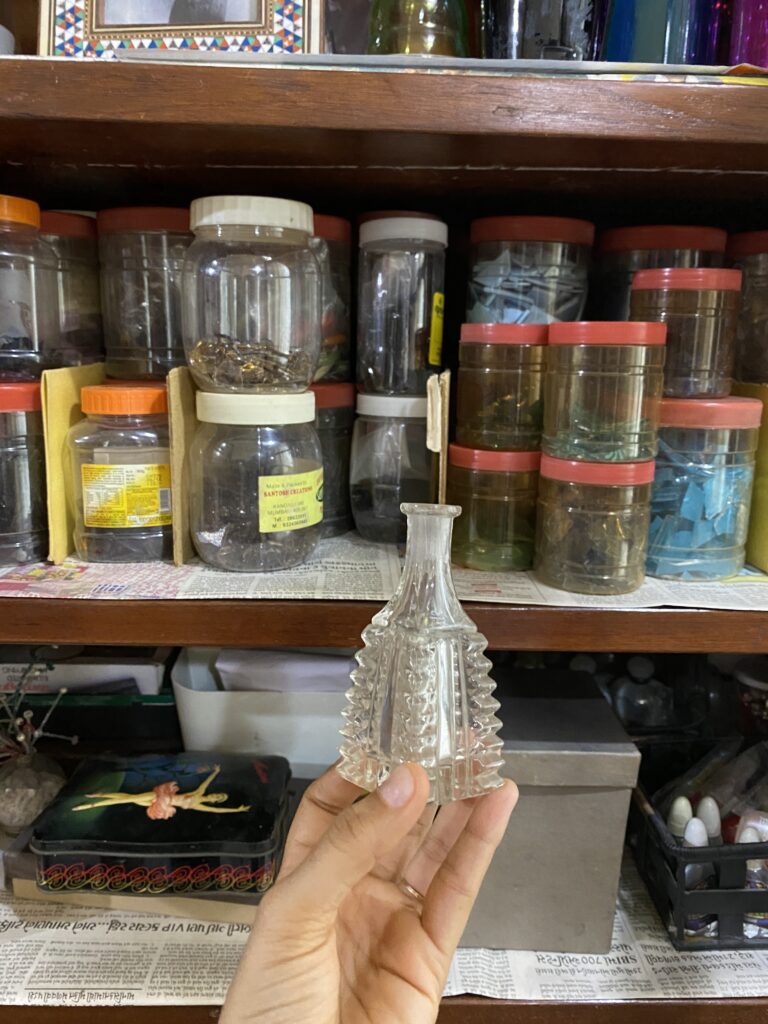
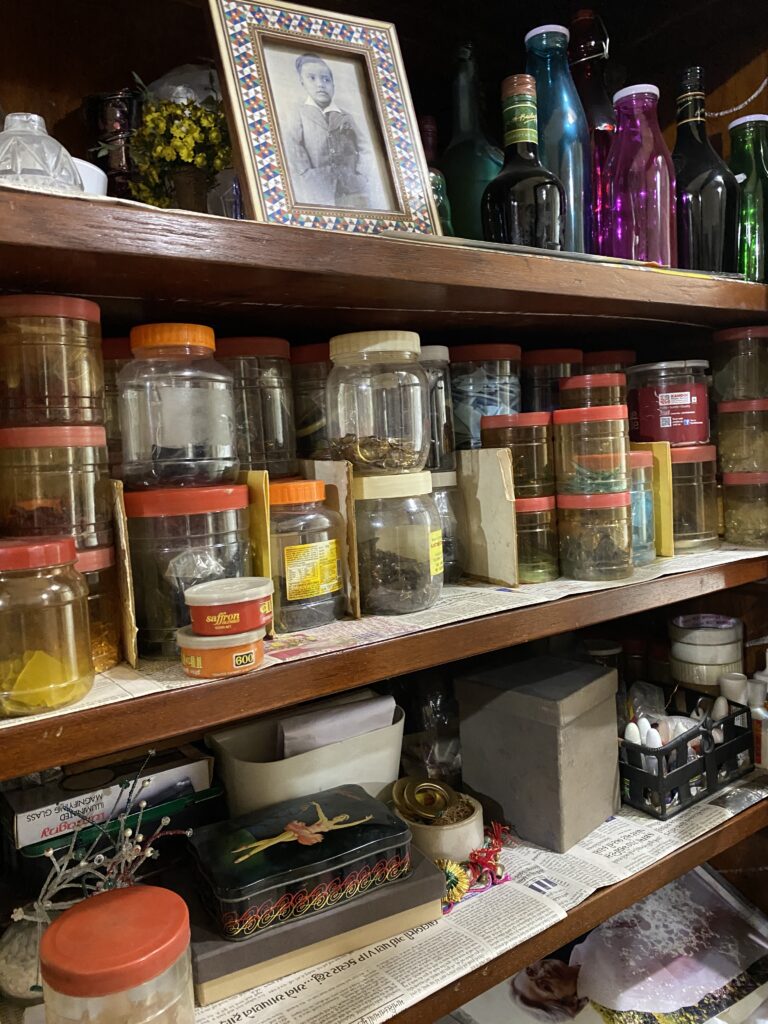
My discovery of this lace-crimper was a chance to peek behind the veil of time; into the aangan of Dadi’s maiden home when children sat around the family’s Darziji as he passed miles of cloth through the common sewing machine. To imagine this object in everyday use is to imagine a slow time, or a time of slow-ness. A time of passing endless fabric edging through the rollers while winding the lever, radio playing in the background; fabric creasing slowly and time never ending, no matter how much of it you use!
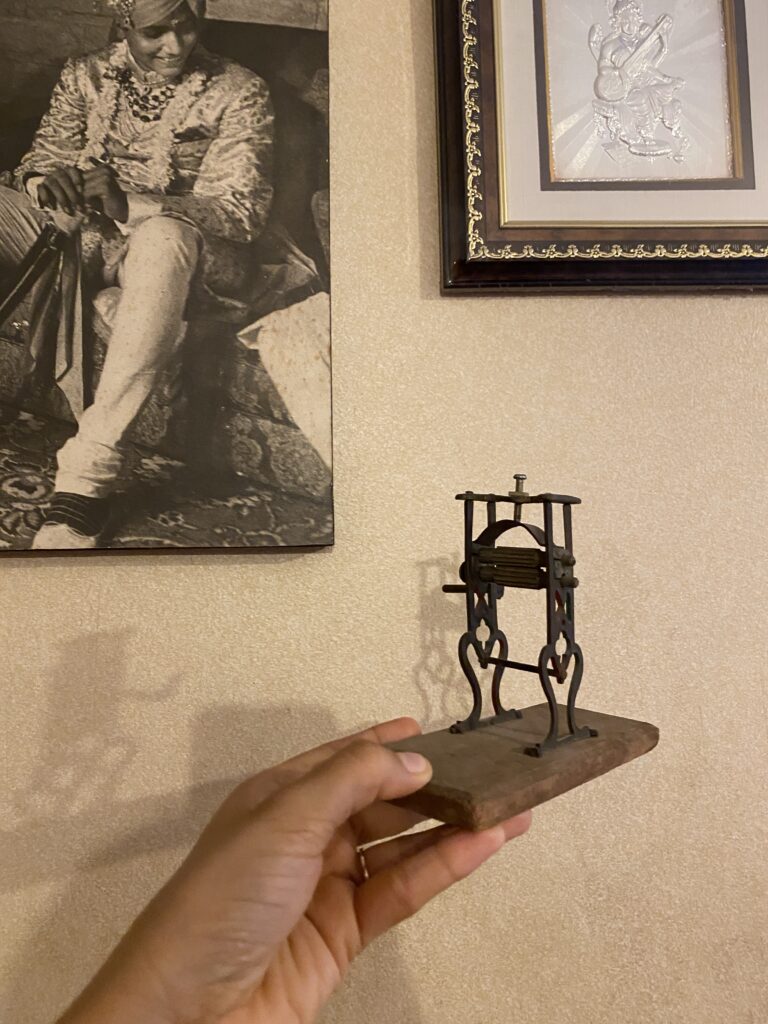
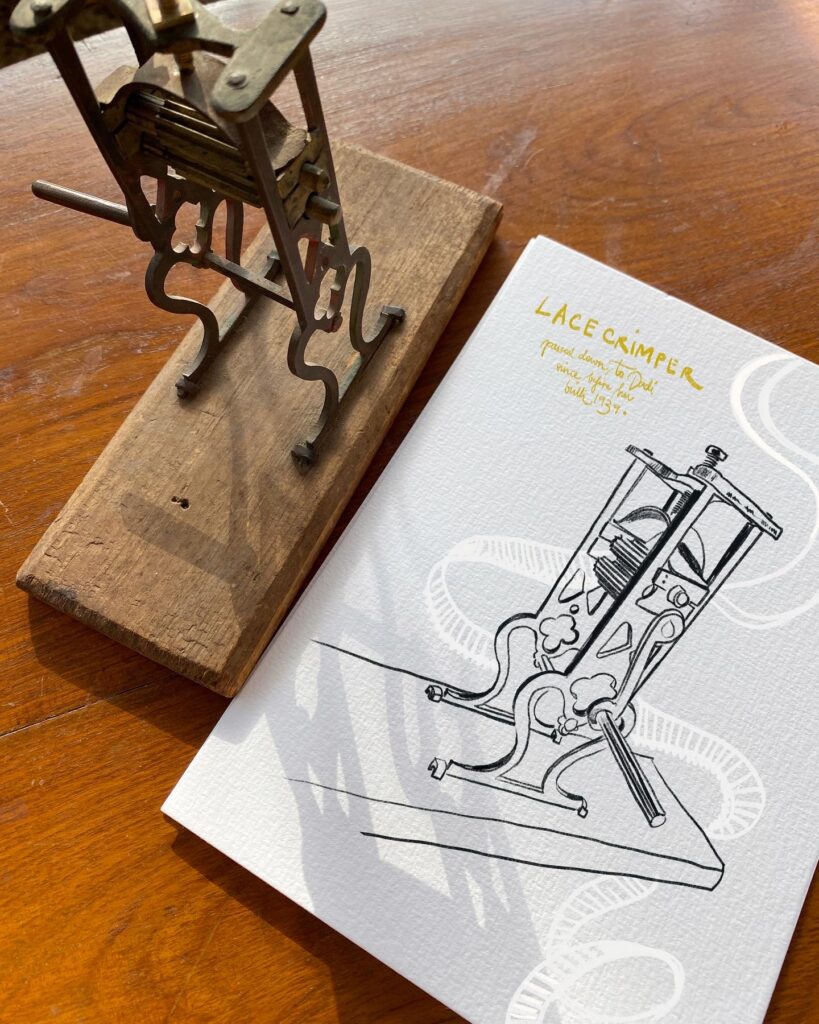
As an object of the family commons, the lace-crimper has journeyed from a different, unrelatable context. Each time I turn the lever, I am not only aware of its ordinariness, but also the attitude to beauty, leisure and making it signifies. Who knows, perhaps a century from now,our objects of leisure, recreation and tools of beauty might be viewed with similar curiosity and awe this lace-crimper evokes!
